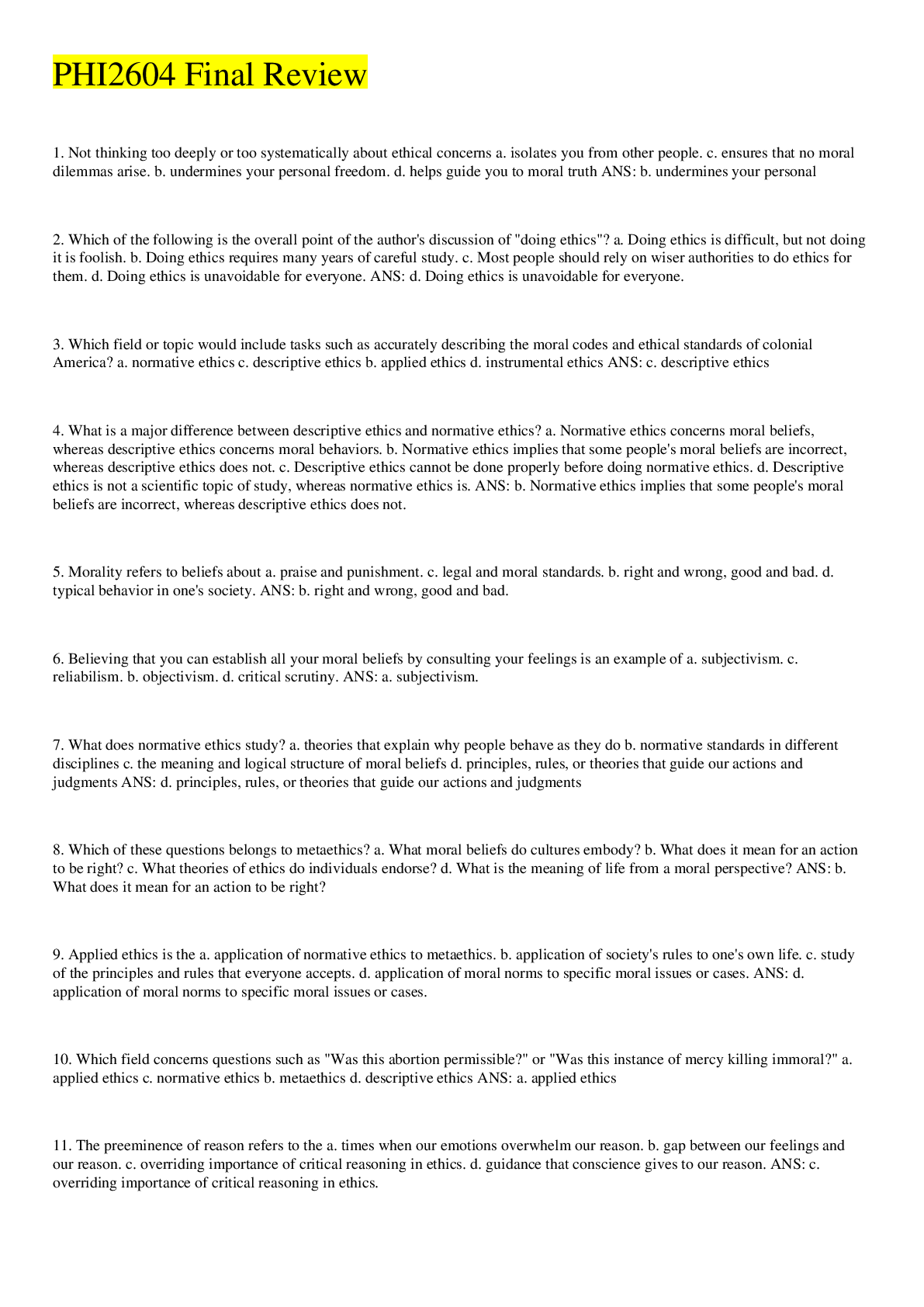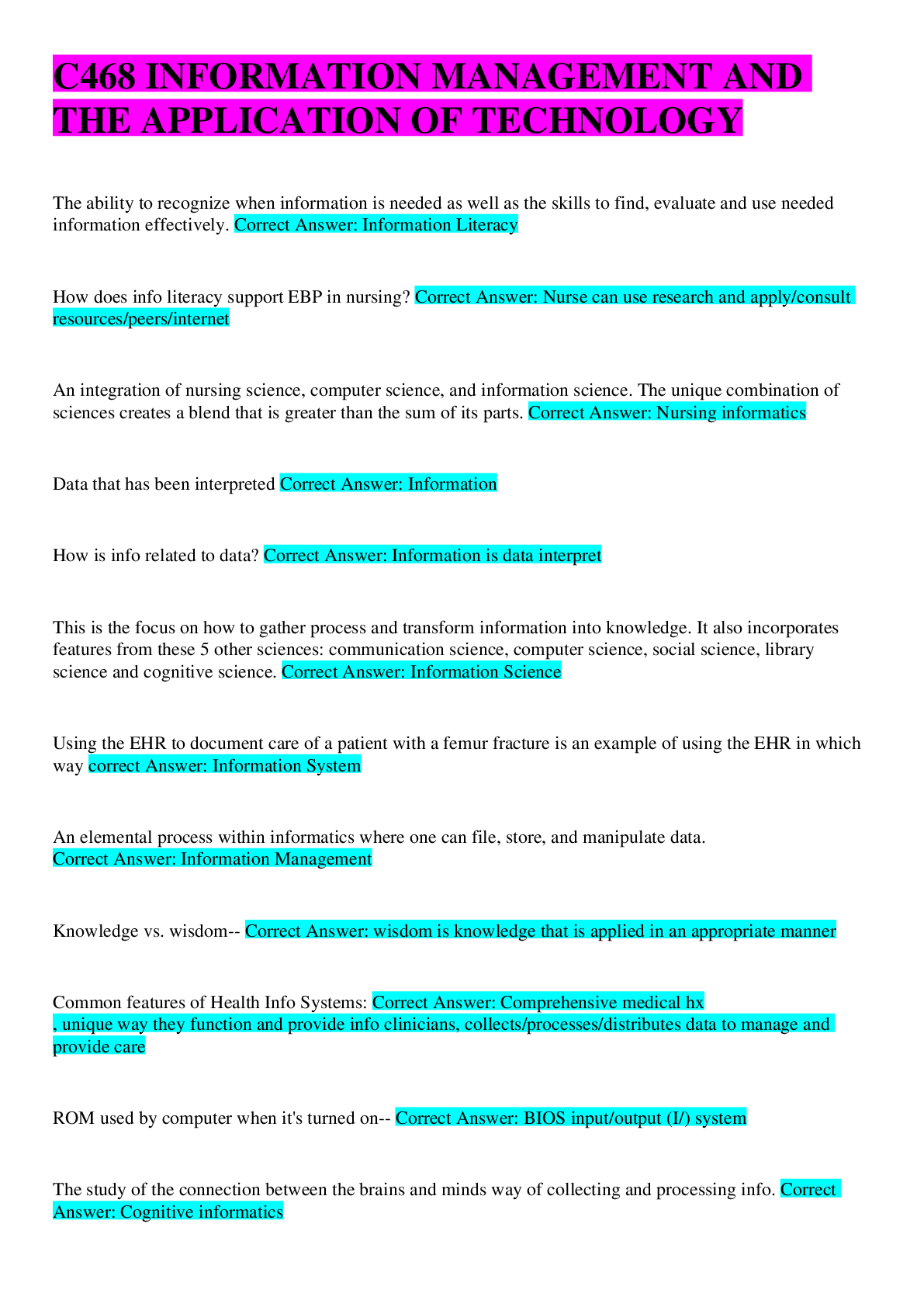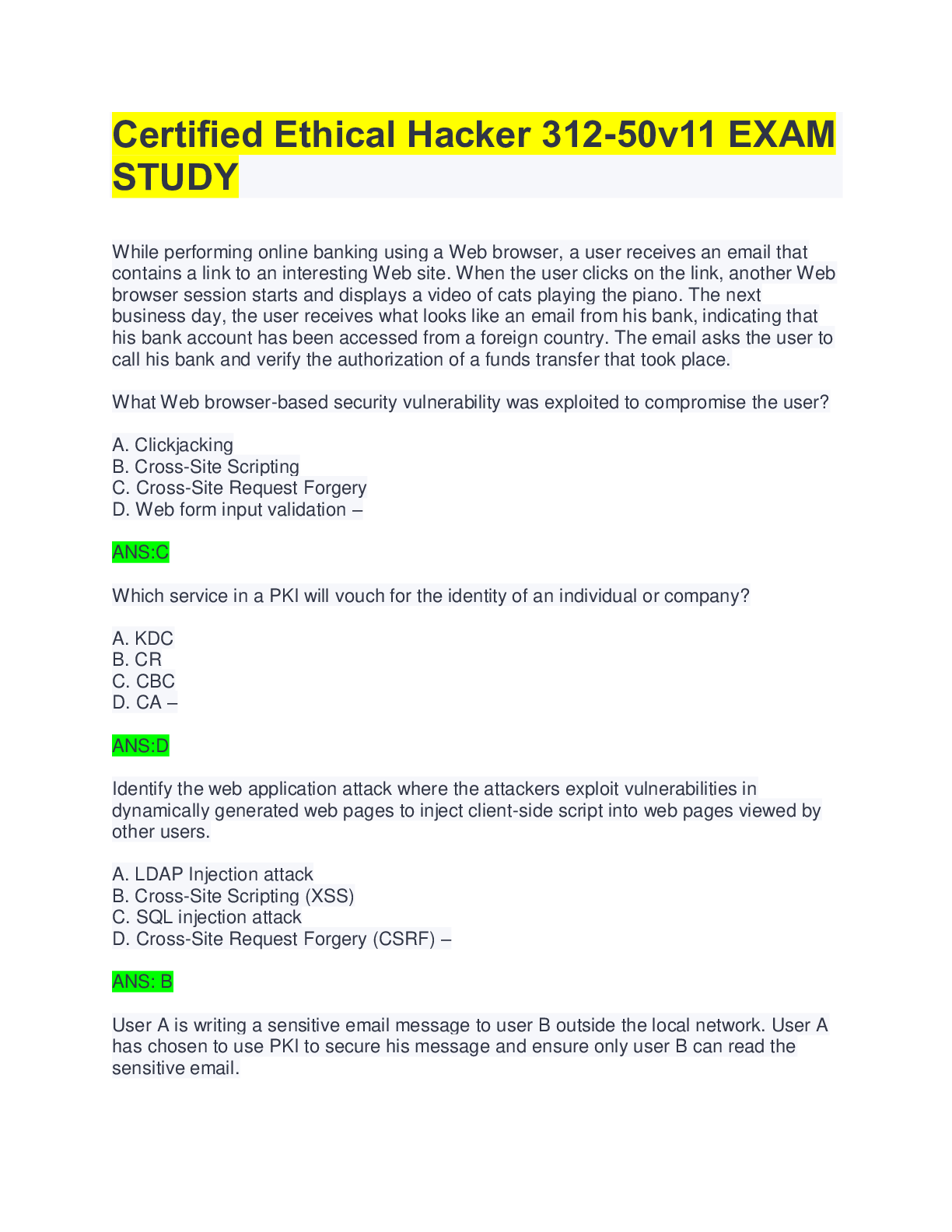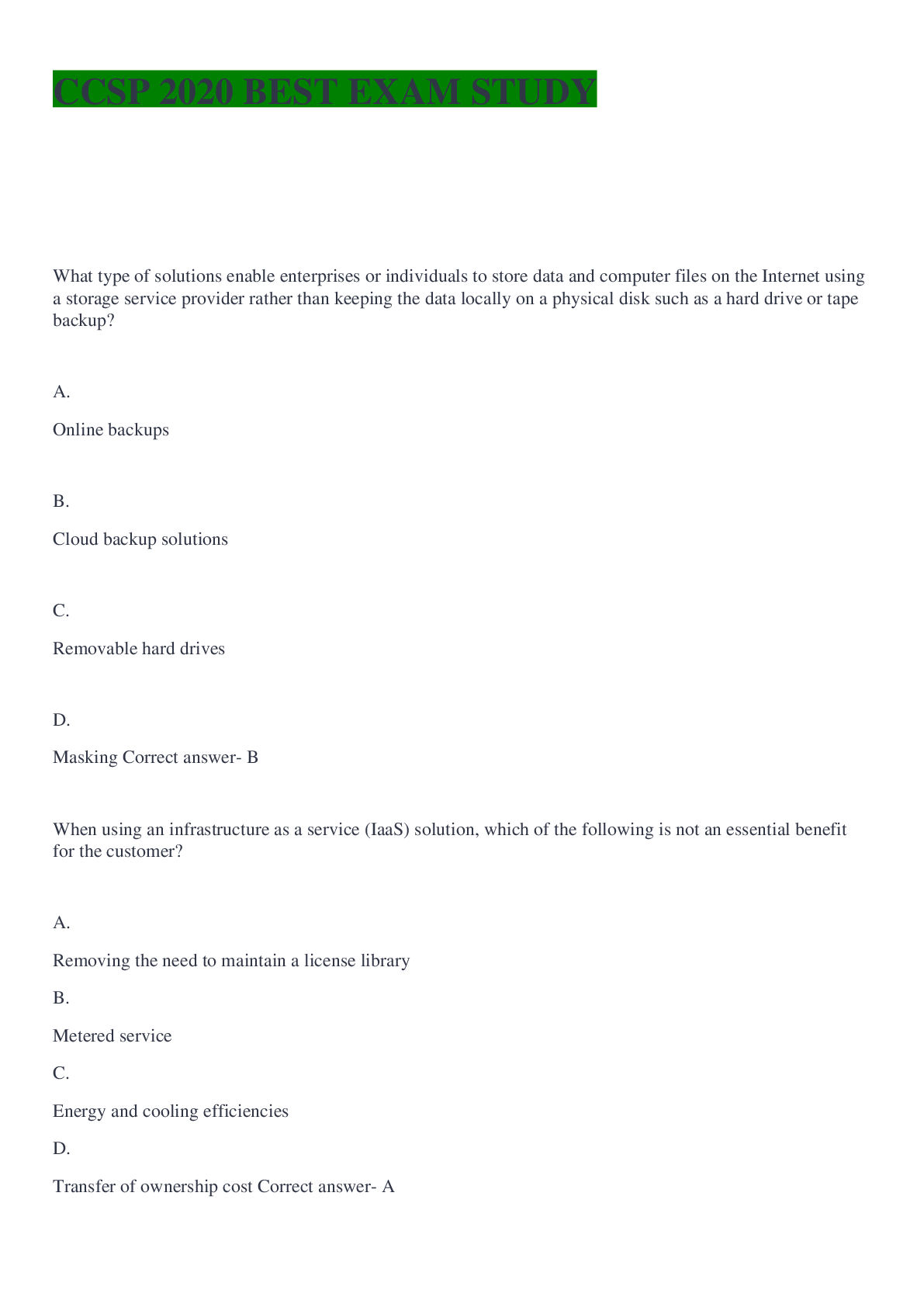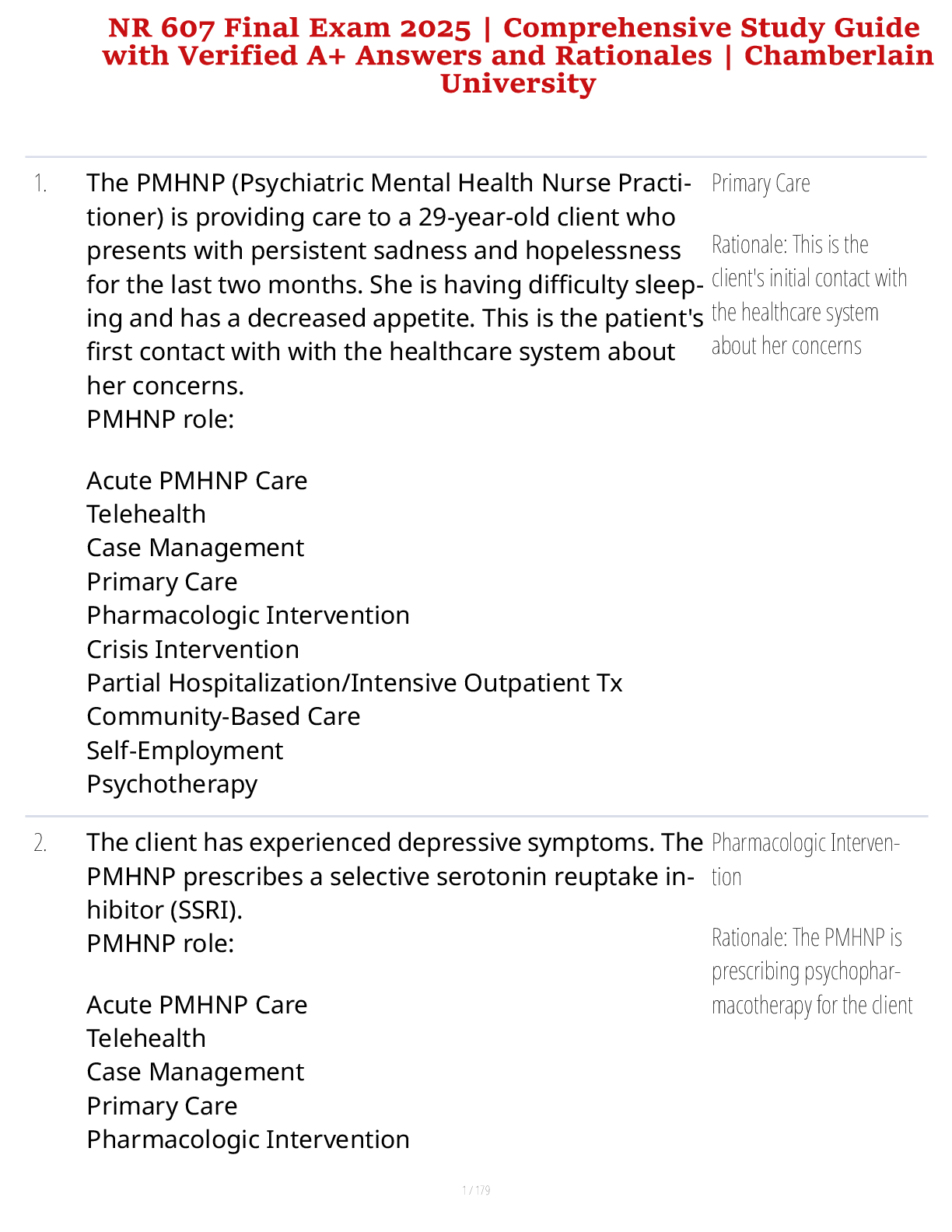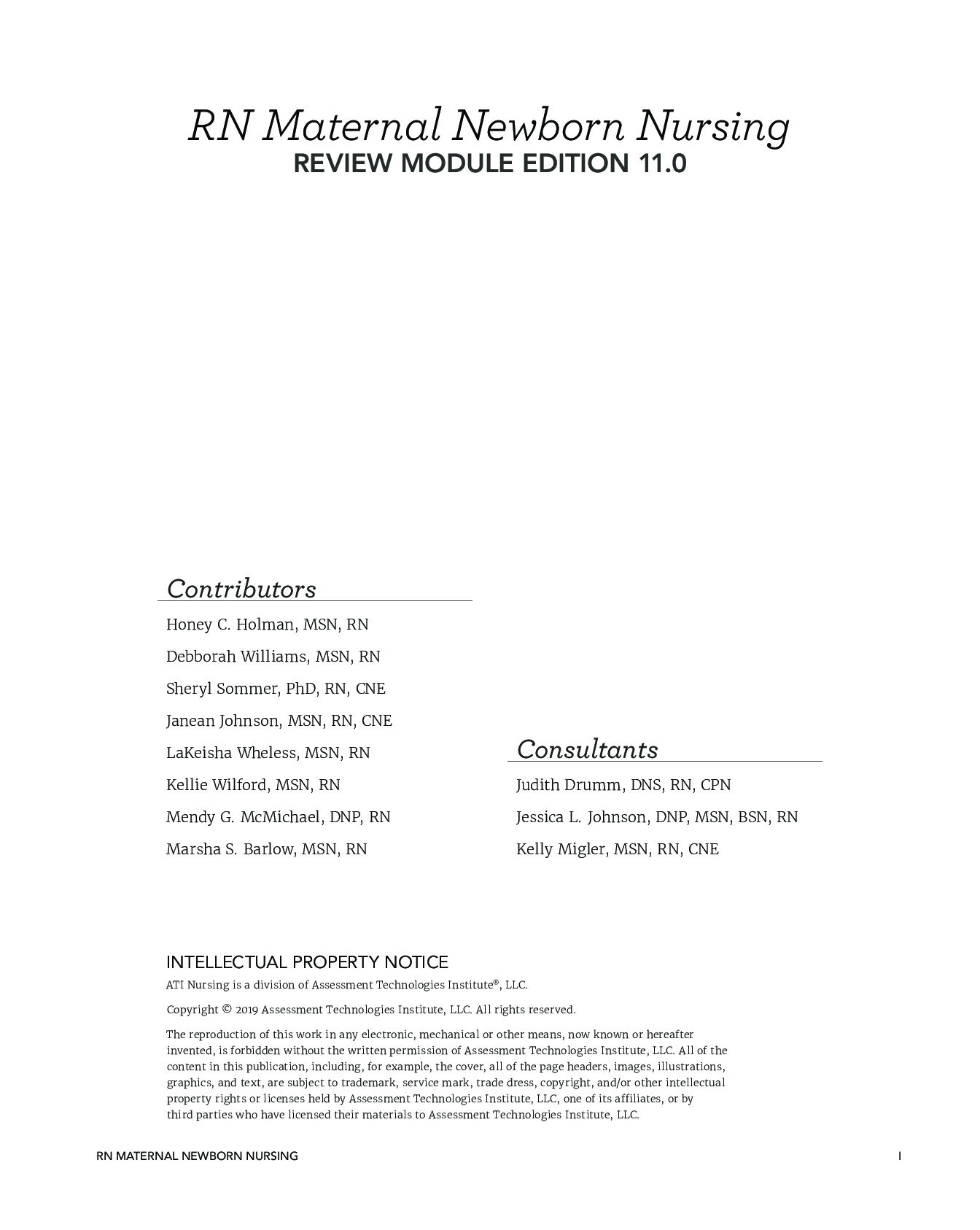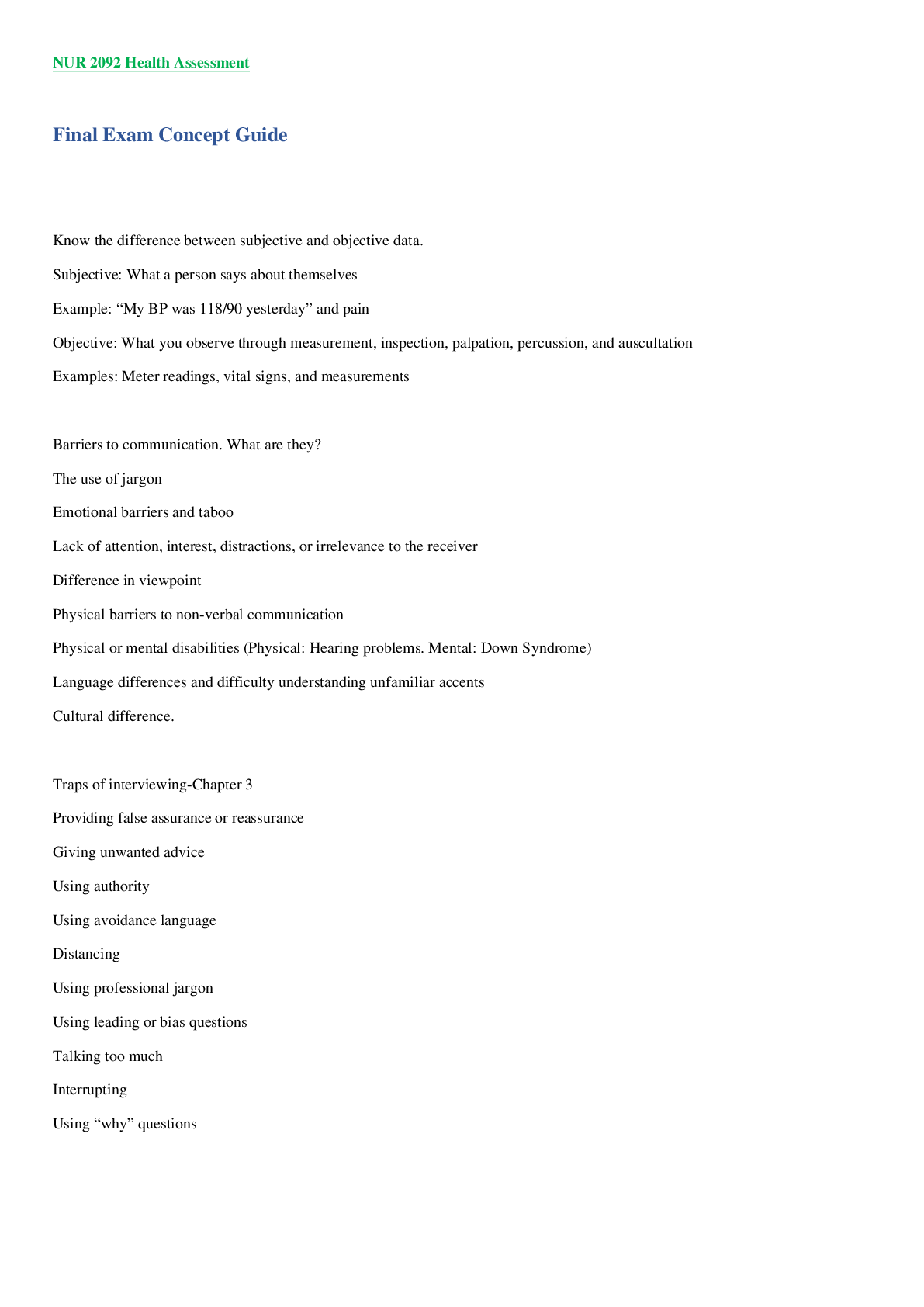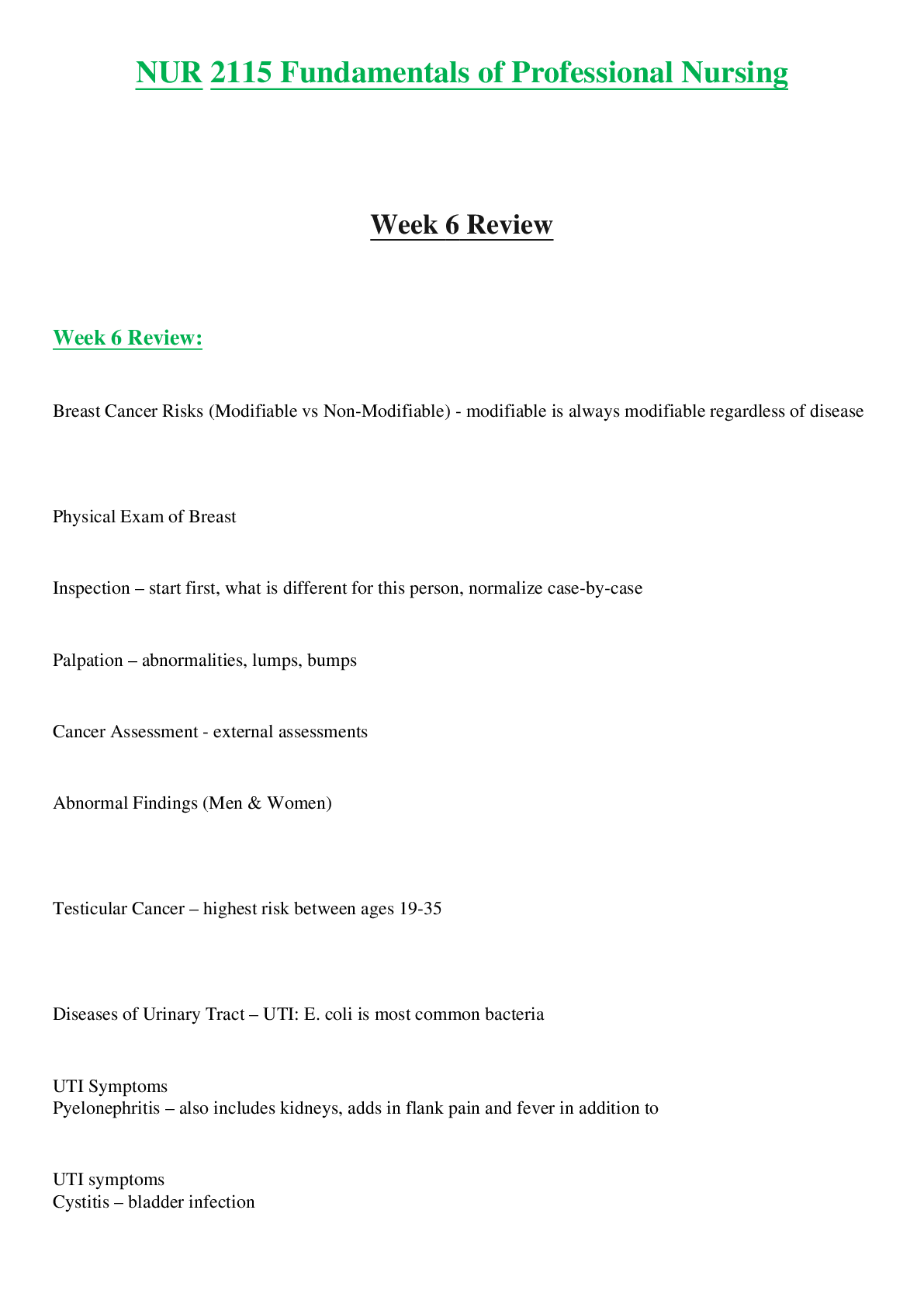Biology > STUDY GUIDE > Saddleback College Computer Science 1A - Rousseau, Michele Exam 1 (All)
Saddleback College Computer Science 1A - Rousseau, Michele Exam 1
Document Content and Description Below
Saddleback College Computer Science 1A - Rousseau, Michele Exam 1Abacus (~2400 BC) Ans- Laid the foundation for positional numbering system Antikythera Mechanism (~100 BC) Ans- The earliest known M ... echanical Analog Computer. It used mechanical gears and pointers. John Napier (1610) Ans- Made a form of logarithm for computing that simplify multiplication, division, square & cube roots Napier's Rods (or Bones) Ans- Rods that could be moved around and placed in specially constructed boards William Oughtred (1622) Ans- Created the side rule Wilhelm Schickard (1623) Ans- Created the Calculating Clock. It was the first discrete automatic calculator and could add or subtract up to 6-digit numbers. This was constructed with wheels. Pascaline (1642) Ans- Used gears with each gear revolving 10 times before it increments the next gear. Gottfried Wilhelm von Leibniz (1666) Ans- First advocated use of the binary number system George Boole (1847) Ans- Created Boolean Algebra which is now being extensively used in programming. Joseph-Marie Jacquard (1801) Ans- Created the automatic loom and started the idea of the "punch cards" Charles Babbage (1802) Ans- Made the difference engine which was the first mechanical computer and was capable of calculating polynomials. This was then scrapped to make the Analytical Engine which was the first programmable computer. The Analytical Engine used punch cards. Ada Byron Lovelace Ans- The first computer programmer and was a friend of Babbage and worked on the Analytical Engine Herman Hollerith Ans- Made a desk named after them that was needed for accounting in the 1890 census. This desk used punch cards and was a gear driven mechanism. They later on made IBM. John Antanasoff & Cliff Berry Ans- Made a computer named using both their last names. This was the first computer that stored data as a charge on a capacitor. This then influenced the ENIAC. Alan Turing (1939) Ans- Known as the "Father of Artificial Intelligence" and was involved in developing the Bombe which broke the Enigma code. Turing Complete Ans- When a machine can perform anything that is calculable. Thomas Flowers and Max Newman Ans- Developed the Colossus John Mauchly and J. Presper Eckert Ans- Created the Eniac (1946), which was developed for the military to calculate firing tables, and the Univac (1951 and 1952), which developed the census bureau for baby boomers and predicted the outcome of the Eisenhower-Stevenson election. Grrace Hopper (1952) Ans- Developed the first compiler and coined the term "debugging" First-Generation Computing (1940-1956) Ans- Vacuum Tubes Ex. Colossus, ABC, and Eniac Second-Generation Computing (1956-1965) Ans- Transistors Third-Generation Computing (1964-1971) Ans- Integrated Circuit Fourth-Generation Computing (1971-Present) Ans- Microprocessors Ted Hoff (1971) Ans- Created microprocessors at Intel Doug Englebart (1964) Ans- Created the mouse Xerox PARC (1973) Ans- Invented the Alto (GUI) MITS (1975) Ans- Invented the Personal Computer Apple (1984) Ans- Invented the Macintosh Fifth-Generation Computing (Present-Future) Ans- Based on AI and machine learning 1 Ans- On 0 Ans- Off 1 Bit Ans- Binary Digit 1 Byte Ans- 8 Bits American Standard Code for Information Interchange (ASCII) Ans- This can store up to 256 characters Unicode Ans- This was developed for international use because ASCII did not have enough characters. It used 2^16 characters Hardware Ans- The physical components of a computer I/O Storage Devices Ans- Cheaper than memory and non-volatile. An example would be a hard drive or USB flash drives. Main Memory Ans- It is a lot faster and each has its own binary address Random Access Memory (RAM) Ans- One of the memory types. This is where all programs and data must be processed. Volatile. Read Only Memory (ROM) Ans- One of the memory types. The contents are written by computer manufacturer. Non-Volatile. Cache Ans- One of the memory types. This is faster than RAM and slower than CPU registers. This is cheaper and more plentiful than registers. System Bus Ans- -Internal Bus -CPU and Memory Expansion Bus Ans- -External Bus -CPU and I/O Devices Data Bus Ans- One of the system buses. Moves data between main memory and the CPU registers. Address Bus Ans- One of the system buses. Holds the address of the data that the data bus is accessing. Control Bus Ans- One of the system buses. Carries the instructions that specify how the information transfer is to take place. Central Processing Unit (CPU) Ans- -The "brain" of the computer -Divided into 3 parts (Registers, CU, ALU) [Show More]
Last updated: 3 years ago
Preview 1 out of 12 pages

Buy this document to get the full access instantly
Instant Download Access after purchase
Buy NowInstant download
We Accept:

Reviews( 0 )
$13.00
Can't find what you want? Try our AI powered Search
Document information
Connected school, study & course
About the document
Uploaded On
May 11, 2022
Number of pages
12
Written in
All
Additional information
This document has been written for:
Uploaded
May 11, 2022
Downloads
0
Views
72




